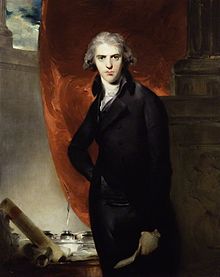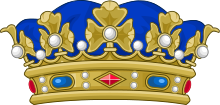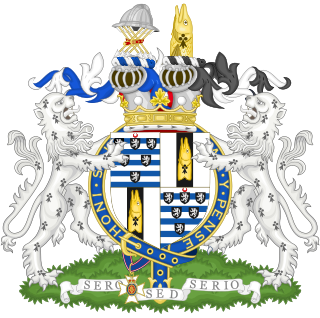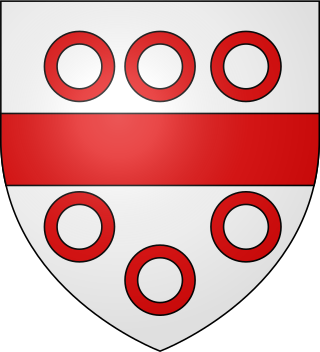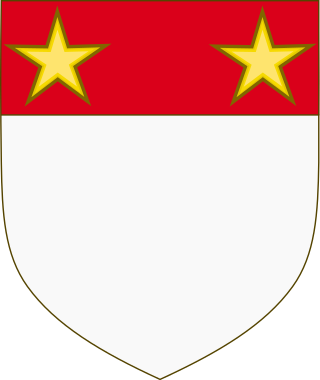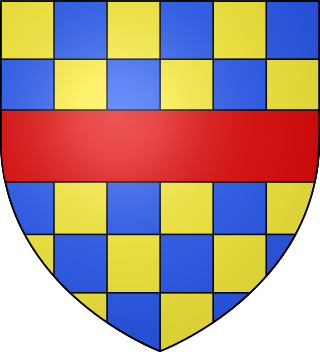| Date | Person summoned | Summoned as | Succeeded as | Notes |
|---|
| 1482 | Thomas FitzAlan, Lord Maltravers | Baron Maltravers | Earl of Arundel (1487) | |
| 5 February 1533 | Henry FitzAlan, Lord Maltravers | Baron Maltravers | Earl of Arundel (1544) | |
| 5 February 1533 | George Boleyn, Viscount Rochford | Viscount Rochford | Never succeeded | Only son of Thomas Boleyn, 1st Earl of Wiltshire; brother of Anne Boleyn |
| 17 February 1533 | Francis Talbot, Lord Talbot | Baron Talbot | Earl of Shrewsbury (1538) | |
| 4 October 1544 | John Paulet, Lord St John of Basing | Baron St John of Basing | Marquess of Winchester (1572) | |
| 5 January 1553 | John Dudley, Earl of Warwick | Earl of Warwick | Never succeeded, due to attainder. | Son of John Dudley, 1st Duke of Northumberland, attainted and executed August 1553. |
| 5 January 1553 | George Talbot, Lord Talbot | Baron Talbot | Earl of Shrewsbury (1560) | |
| 1 March 1553 | Francis Russell, Lord Russell | Baron Russell | Earl of Bedford (1555) | |
| 14 August 1553 | Thomas Radclyffe, Viscount FitzWalter | Baron FitzWalter | Earl of Sussex (1553) | |
| 23 January 1559 | Henry Hastings, Lord Hastings | Baron Hastings | Earl of Huntingdon (1560) | |
| 23 January 1559 | Henry Stanley, Lord Strange | Baron Strange | Earl of Derby (1572) | |
| 5 May 1572 | William Paulet, Lord St John of Basing | Baron St John of Basing | Marquess of Winchester (1576) | |
| January 1581 | John Russell, Lord Russell | Baron Russell | Never succeeded | Heir apparent of Francis Russell, 2nd Earl of Bedford, but predeceased his father. |
| 28 January 1589 | Gilbert Talbot, Lord Talbot | Baron Talbot | Earl of Shrewsbury (1590) | |
| 28 January 1589 | Ferdinando Stanley, Lord Strange | Baron Strange | Earl of Derby (1593) | |
| 31 January 1604 | William Howard, Lord Howard of Effingham | Baron Howard of Effingham | Never succeeded | Heir apparent of Charles Howard, 1st Earl of Nottingham, but predeceased his father. |
| 31 January 1604 | Henry Somerset, Lord Herbert | Baron Herbert | Earl of Worcester (1628) | created Marquess of Worcester in 1642 |
| 8 February 1610 | Thomas Clinton, Lord Clinton de Say | Baron Clinton | Earl of Lincoln (1572) | |
| 8 February 1610 | Theophilus Howard, Lord Howard de Walden | Baron Howard de Walden | Earl of Suffolk (1626) | |
| February 1621 | William Seymour, Lord Beauchamp | Baron Beauchamp | Earl of Hertford (1621) | restored to the forfeit title of Duke of Somerset in 1660 |
| 10 February 1624 | John Paulet, Lord St John of Basing | Baron St John of Basing | Marquess of Winchester (1628) | |
| 28 March 1626 | Algernon Percy, Lord Percy | Baron Percy | Earl of Northumberland (1632) | |
| 1 April 1626 | Spencer Compton, Lord Compton | Baron Compton | Earl of Northampton (1630) | |
| 22 May 1626 | Edward Montagu, Lord Kimbolton | Baron Montagu of Kimbolton | Earl of Manchester (1642) | |
| February 1628 | Henry Ley, Lord Ley | Baron Ley | Earl of Marlborough (1629) | |
| 7 March 1628 | James Stanley, Lord Strange | Baron Strange | Earl of Derby (1642) | See introduction |
| 23 April 1628 | Hon. Edward Conway | Baron Conway de Ragley | Viscount Conway (1631) | |
| 3 November 1640 | Charles Howard, Viscount Andover | Baron Howard of Charlton | Earl of Berkshire (1669) | |
| 3 November 1640 | Ferdinando Hastings, Lord Hastings | Baron Hastings | Earl of Huntingdon (1643) | |
| 3 November 1640 | Hon. Thomas Wentworth | Baron Wentworth | Never succeeded | Heir apparent of Thomas Wentworth, 1st Earl of Cleveland, but predeceased his father. |
| 3 November 1640 | Montagu Bertie, Lord Willoughby de Eresby | Baron Willoughby de Eresby | Earl of Lindsey (1642) | |
| 27 November 1640 | John Carey, Viscount Rochford | Baron Hunsdon of Hunsdon | Earl of Dover (1666) | |
| 11 January 1641 | Henry Pierrepont, Lord Pierrepont | Baron Pierrepont | Earl of Kingston-upon-Hull (1643) | created Marquess of Dorchester in 1645 |
| 26 January 1641 | Robert Rich, Lord Rich | Baron Rich | Earl of Warwick (1658) | |
| 14 May 1641 | Oliver St John, Lord St John of Bletso | Baron St John of Bletso | Never succeeded | Heir apparent of Oliver St John, 1st Earl of Bolingbroke, but predeceased his father. |
| 9 June 1641 | George Digby, Lord Digby | Baron Digby | Earl of Bristol (1653) | |
| 14 January 1678 | Henry Howard, Earl of Arundel | Baron Mowbray | Duke of Norfolk (1684) | |
| 22 October 1680 | Robert Leke, Lord Deincourt | Baron Deincourt | Earl of Scarsdale (1681) | |
| 1 November 1680 | Hon. Conyers Darcy | Baron Conyers | Earl of Holderness (1689) | |
| 11 July 1689 | Charles Berkeley, Viscount Dursley | Baron Berkeley | Earl of Berkeley (1698) | |
| 11 July 1689 | Robert Sidney, Viscount L'Isle | Baron Sydney of Penshurst | Earl of Leicester (1698) | |
| 16 July 1689 | Charles Boyle, 3rd Viscount Dungarvan | Baron Clifford | Never succeeded | Heir apparent of Richard Boyle, 1st Earl of Burlington, but predeceased his father |
| 16 July 1689 | Charles Granville, Lord Lansdown | Baron Granville | Earl of Bath (1701) | |
| 3 March 1690 | Peregrine Osborne, 2nd Viscount Dunblane | Baron Osborne | Duke of Leeds (1712) | |
| 19 April 1690 | Robert Bertie, Lord Willoughby de Eresby | Baron Willoughby de Eresby | Earl of Lindsey (1701) | created Marquess of Lindsey in 1706 and Duke of Ancaster and Kesteven in 1715 |
| 5 March 1705 | James Berkeley, Viscount Dursley | Baron Berkeley | Earl of Berkeley (1710) | |
| 28 December 1711 | James Compton, Lord Compton | Baron Compton | Earl of Northampton (1727) | |
| 29 December 1711 | Charles Bruce, Viscount Bruce of Ampthill | Baron Bruce of Whorlton | Earl of Ailesbury (1741) | |
| 28 January 1713 | Peregrine Osborne, Viscount Osborne | Baron Osborne | Duke of Leeds (1729) | |
| 4 March 1715 | Richard Lumley, Viscount Lumley | Baron Lumley | Earl of Scarbrough (1721) | |
| 16 March 1715 | Peregrine Bertie, Marquess of Lindsey | Baron Willoughby de Eresby | Duke of Ancaster and Kesteven (1723) | |
| 12 April 1717 | Charles Paulet, Marquess of Winchester | Baron Pawlett of Basing | Duke of Bolton (1722) | See introduction |
| 8 November 1718 | Anthony Grey, Earl of Harold | Baron Lucas of Crudwell | Never succeeded | Heir apparent of Henry Grey, 1st Duke of Kent, but predeceased his father. |
| 24 May 1723 | Hon. Charles Townshend | Baron Townshend | Viscount Townshend (1738) | As his father was already Lord Townshend, Charles was styled Lord Lynn after the barony's territorial designation of Lynn Regis |
| 11 June 1733 | John Hervey, Lord Hervey | Baron Hervey | Never succeeded | Heir apparent of John Hervey, 1st Earl of Bristol, but predeceased his father. |
| 17 January 1734 | John Poulett, Viscount Hinton | Baron Poulett | Earl Poulett (1743) | As his father was already Lord Poulett, John was styled Lord Hinton after the barony's territorial designation of Hinton St George |
| 22 January 1750 | Henry Hyde, Viscount Cornbury | Baron Hyde | Never succeeded | Heir apparent of Henry Hyde, 4th Earl of Clarendon, but predeceased his father. |
| 13 June 1751 | William Cavendish, Marquess of Hartington | Baron Cavendish of Hardwick | Duke of Devonshire (1755) | |
| 15 May 1776 [2] | Francis Osborne, Marquess of Carmarthen | Baron Osborne | Duke of Leeds (1789) | |
| 30 November 1798 | Robert Hobart, Lord Hobart | Baron Hobart | Earl of Buckinghamshire (1804) | |
| 25 February 1799 [3] | George Granville Leveson-Gower, Earl Gower | Baron Gower | Marquess of Stafford (1803) | created Duke of Sutherland in 1833. |
| 29 June 1801 [4] | Thomas Pelham, Lord Pelham of Stanmer | Baron Pelham of Stanmer | Earl of Chichester (1805) | |
| 15 June 1801 | George Legge, Viscount Lewisham | Baron Dartmouth | Earl of Dartmouth (1801) | |
| 15 November 1803 [5] | Robert Jenkinson, Lord Hawkesbury | Baron Hawkesbury | Earl of Liverpool (1808) | |
| 16 October 1804 [6] | George Ashburnham, Viscount St Asaph | Baron Ashburnham | Earl of Ashburnham (1812) | |
| 12 March 1806 [7] | George Spencer-Churchill, Marquess of Blandford | Baron Spencer of Wormleighton | Duke of Marlborough (1817) | |
| 4 November 1806 [8] | Alexander Hamilton, Marquess of Douglas and Clydesdale | Baron Dutton | Duke of Hamilton (1819) | |
| 11 April 1807 [9] | Charles Montagu-Scott, Earl of Dalkeith | Baron Scott of Tyndale | Duke of Buccleuch and Queensberry (1812) | |
| 11 April 1807 [9] | George Gordon, Marquess of Huntly | Baron Gordon | Duke of Gordon (1827) | |
| 12 March 1812 [10] | Hugh Percy, Earl Percy | Baron Percy | Duke of Northumberland (1817) | |
| 5 January 1822 | George Cholmondeley, Earl of Rocksavage | Baron Newburgh | Marquess of Cholmondeley (1827) | |
| 22 November 1826 [11] | George Sutherland-Leveson-Gower, Earl Gower | Baron Gower | Duke of Sutherland (1833) | At the time of the writ of acceleration, he was heir apparent of George Leveson-Gower, 2nd Marquess of Stafford, who was created Duke of Sutherland in 1833 |
| 15 January 1833 [12] | Henry Paget, Earl of Uxbridge | Baron Paget of Beaudesert | Marquess of Anglesey (1854) | |
| 15 January 1833 [12] | Francis Russell, Marquess of Tavistock | Baron Howland | Duke of Bedford (1839) | |
| 15 January 1833 [12] | George Grey, Lord Grey of Groby | Baron Grey of Groby | Never succeeded | Heir apparent of George Grey, 6th Earl of Stamford, but predeceased his father. |
| 8 January 1835 [13] | George Pratt, Earl of Brecknock | Baron Camden | Marquess Camden (1840) | |
| 2 July 1838 [14] | Francis D'Arcy-Osborne, Marquess of Carmarthen | Baron Osborne | Duke of Leeds (1838) | |
| 5 July 1838 [15] | George Brudenell-Bruce, Earl Bruce | Baron Bruce of Tottenham | Marquess of Ailesbury (1856) | |
| 28 February 1839 [16] | Hugh Fortescue, Viscount Ebrington | Baron Fortescue | Earl Fortescue (1841) | |
| 16 August 1841 | Henry Howard, Earl of Surrey | Baron Maltravers | Duke of Norfolk (1842) | |
| 8 September 1841 [17] | William Lowther, Viscount Lowther | Baron Lowther | Earl of Lonsdale (1844) | |
| 4 November 1844 [18] | Edward Smith-Stanley, Lord Stanley | Baron Stanley | Earl of Derby (1851) | Resigned from the Commons in September, in advance of the writ being issued |
| 8 April 1853 [19] | George Byng, Viscount Enfield | Baron Strafford | Earl of Strafford (1860) | |
| 11 July 1856 [20] | Henry Petty-Fitzmaurice, Earl of Shelburne | Baron Wycombe | Marquess of Lansdowne (1863) | Resigned from the Commons shortly before the writ was issued |
| 6 May 1859 [21] | Charles Bennett, Lord Ossulston | Baron Ossulston | Earl of Tankerville (1859) | |
| 5 December 1859 [22] | Hugh Fortescue, Viscount Ebrington | Baron Fortescue | Earl Fortescue (1861) | Resigned from the Commons in January 1859 |
| 9 July 1863 [23] | Ferdinand Seymour, Earl St Maur | Baron Seymour | Never succeeded | Heir apparent of Edward Seymour, 12th Duke of Somerset, but predeceased his father. |
| 14 September 1870 [24] | William Eliot, Lord Eliot | Baron Eliot | Earl of St Germans (1877) | |
| 26 February 1874 [25] | George Byng, Viscount Enfield | Baron Strafford | Earl of Strafford (1886) | Byng had been in the Commons until defeated at the general election the previous month |
| 5 September 1876 [26] | William Keppell, Viscount Bury | Baron Ashford | Earl of Albemarle (1891) | |
| 12 April 1880 [27] | William Amherst, Viscount Holmesdale | Baron Amherst | Earl Amherst (1886) | |
| 22 July 1887 [28] | Henry Percy, Earl Percy | Baron Lovaine | Duke of Northumberland (1899) | |
| 6 June 1896 [29] | Henry Manners, Marquess of Granby | Baron Manners | Duke of Rutland (1906) | |
| 9 January 1941 [30] | Roundell Palmer, Viscount Wolmer | Baron Selborne | Earl of Selborne (1942) | Had resigned from the Commons two months earlier |
| 21 January 1941 [31] | Robert Gascoyne-Cecil, Viscount Cranborne | Baron Cecil | Marquess of Salisbury (1947) | Sitting in the Commons at the time the writ was issued |
| 16 January 1951 [32] | Gilbert Heathcote-Drummond-Willoughby, Lord Willoughby de Eresby | Baron Willoughby de Eresby | Earl of Ancaster (1951) | |
| 29 April 1992 [33] | Robert Gascoyne-Cecil, Viscount Cranborne | Baron Cecil | Marquess of Salisbury (2003) | Created a life peer as Baron Gascoyne-Cecil in 1999 |
|
